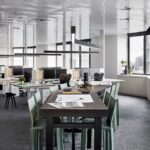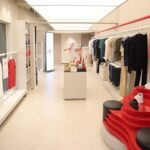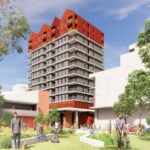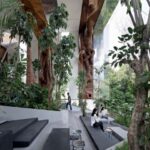Traditional Tea House designed for a modern world
How do you create a traditional Tea House without the design feeling dated or out of style? This is the issue the designer Steve Gao had to contend with.
To create a space allowing tea drinkers to have some quiet and relaxing time at TEA-Z in Shenzhen, China but that also felt modern and on-trend.

GALLERY





The renaissance of an elegant eastern lifestyle and the tea culture becomes an expected new trend. The Chinese have enjoyed a long history of drinking tea, but the way of doing it requires some new thoughts to match the lifestyle these days.
The space is divided into four parts, including a front lobby for having a taste of the tea, a bar counter, a storage room and a display area for purchasing. The storage room, apart from its basic function, is used to narrow the space in the middle part of the room, giving the customers a differentiated view as they walk through the tea house.
Instead of the traditional way to decorate a tea house, an installation of multiple strips hand weaved in bamboo is used to cover the roof and to further extend to part of the walls. The design was inspired by the fluid movement of a fisherman who is casting the net. The colour of the bamboo strikes a perfect balance with the black, white and grey in the space, which are the colours often used in traditional Chinese brush painting. People can enjoy their tea and refreshments in this winding space while appreciating the installation. The handmade craft reminds people of an image of a fisherman casting his net with full strength and the curve falls naturally on the surface of the water, solid and smooth, with a touch of rawness. The lightness in the tone of the material best speaks to the casual and unbridled curves, adding to the space some poetic and comforting elements.
The light-coloured textures on the wall drew its inspirations from the cracks in Chinese ceramics, the lines were drawn in the same proportion as the cracks and painted on the wall by hand. Cracking is the most common method for firing Chinese ceramics, and as the container for tea, the categories, procedures, colours and glaze of pottery always has an influence on the fragrance and the taste of tea. Therefore, the walls exist as an indispensable element in the room to match the design of the space.
Friendly soft lightings are used in the house to avoid the aggressiveness of harsh lights and they are designed separately for different areas. The lamps that resemble a drop of water are covered in mercury coatings so that people do not get glaring stares even when they look at the lamps directly, and they are like raindrops falling into the space. The room is immersed in the pleasant lights coming from the thoughtfully placed lamps, and people entering into the space begin to speak in a softer tone and unload their anxieties without even noticing it.
There are no interferences or blocks in the room and the arrangement of seats reminds people of a spacious café, which is an intentional move by the designer. “We hope that customers are able see each other and this tea house should be a place for people to connect,” Gao said. The curving bamboo installation makes the space boundary-less and forms a link between the roof and the walls, creating an open and free atmosphere.
The design creates a specific emotion for the space through the use of colours, materials, lightings and sounds, it is a philosophy that Gao has been practicing along the way. The colour combination, the soft lightings and the fluidity in the space brings a unique temperament to TEA-Z that is unconstrained, quiet, unhurried and open. This is what the owner has hoped for this new type of tea house and for how the visitors feel when they walk into the shop.
You could almost say, it’s a traditional tea house with a twist… of bamboo.
Images Yungfen Shi via ArchDaily
Studio Tate has completed a lavish redesign of the 17th floor of a distinctive hexagonal building in Melbourne, ...
Red sculptural interventions define the interior of ARKS’ new flagship store in Bandra West, Mumbai, where Anagram Architects ...
Work is set to begin on a new 12-storey mixed-use affordable housing development in Adelaide’s inner north-west, marking ...
Frame Garden Café, known as Tanatap, represents another prototype in an evolving series of multi-level greenspaces that challenge ...







